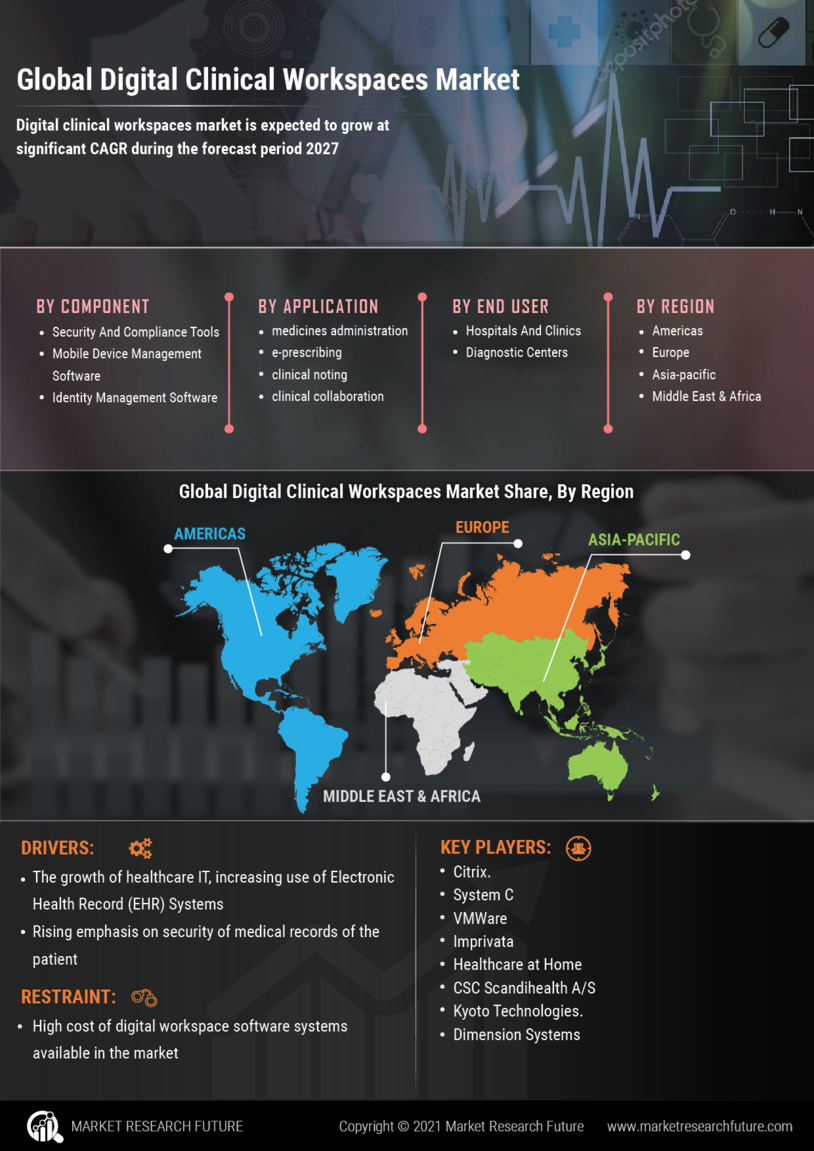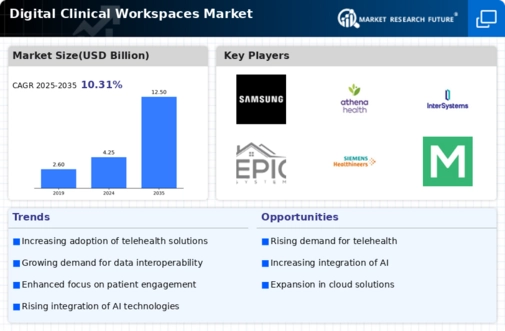Integration of Advanced Technologies
The integration of advanced technologies such as artificial intelligence and machine learning is a pivotal driver in the Digital Clinical Workspaces Market. These technologies enhance clinical decision-making, streamline workflows, and improve patient outcomes. For instance, AI algorithms can analyze vast amounts of patient data to provide actionable insights, thereby reducing the time healthcare professionals spend on administrative tasks. The market for AI in healthcare is projected to reach USD 45 billion by 2026, indicating a robust growth trajectory. This integration not only optimizes operational efficiency but also fosters a more patient-centric approach, which is increasingly demanded in modern healthcare settings.
Rising Need for Interoperable Systems
The rising need for interoperable systems is a critical driver in the Digital Clinical Workspaces Market. As healthcare providers increasingly utilize various digital tools, the ability to share and access data seamlessly across platforms has become essential. Interoperability enhances collaboration among healthcare teams, improves patient care coordination, and reduces the risk of errors. Recent studies indicate that organizations with interoperable systems experience a 30% reduction in administrative costs. This growing recognition of the importance of interoperability is likely to propel the demand for digital clinical workspaces that facilitate integrated solutions, ultimately leading to improved healthcare outcomes.
Growing Demand for Remote Patient Monitoring
The growing demand for remote patient monitoring is significantly influencing the Digital Clinical Workspaces Market. As healthcare systems seek to provide continuous care, the need for digital solutions that facilitate remote monitoring has surged. This trend is driven by the increasing prevalence of chronic diseases, which require ongoing management. According to recent estimates, the remote patient monitoring market is expected to grow at a CAGR of 25% over the next five years. This growth underscores the necessity for digital clinical workspaces that can support healthcare providers in delivering effective remote care, thereby enhancing patient engagement and satisfaction.
Increased Focus on Data Security and Privacy
The increased focus on data security and privacy is a significant driver in the Digital Clinical Workspaces Market. As healthcare organizations digitize their operations, the protection of sensitive patient information has become paramount. Regulatory frameworks such as HIPAA and GDPR impose stringent requirements on data handling, compelling organizations to invest in secure digital clinical workspaces. The global market for healthcare cybersecurity is projected to reach USD 125 billion by 2027, reflecting the urgent need for robust security measures. This emphasis on data security not only protects patient information but also builds trust between healthcare providers and patients, which is essential for the successful implementation of digital solutions.
Regulatory Support for Digital Health Solutions
Regulatory support for digital health solutions is emerging as a crucial driver in the Digital Clinical Workspaces Market. Governments and regulatory bodies are increasingly recognizing the importance of digital health technologies in improving healthcare delivery. Initiatives aimed at promoting telehealth and digital health solutions are being implemented, which encourages healthcare providers to adopt these technologies. For example, recent policy changes have streamlined the approval process for digital health applications, making it easier for providers to integrate these solutions into their practices. This supportive regulatory environment is likely to accelerate the adoption of digital clinical workspaces, fostering innovation and enhancing patient care.


















Leave a Comment